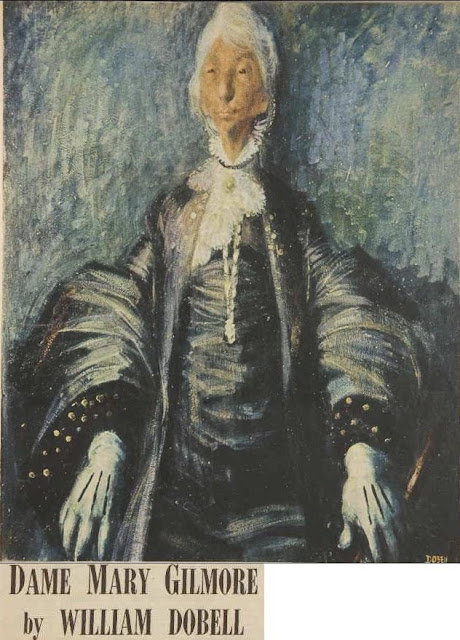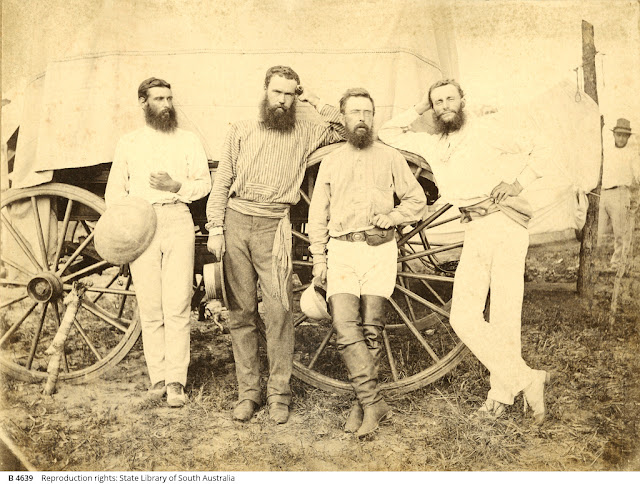Captain James Cook FRS (7 November 1728 – 14 February 1779) was a British explorer, cartographer and British naval officer, famous for his three voyages of discovery.
1768–1771: Cook's First voyage on HMS
Endeavour. In May 1768, Cook was promoted to the rank of lieutenant and given command of the bark
Endeavour on a joint Admiralty-Royal Society expedition to the Pacific.
Not only would Cook observe the Transit of Venus across the face of the Sun, he was given secret orders to
search for the unknown Great Southern Continent. This was a trip into the unknown.
The second page instructs Cook "with the Consent of the Natives to take possession of Convenient Situations in the Country in the Name of the King of Great Britain". But "if you find the Country uninhabited, you are to take
possession of it for His Majesty ... as First Discoverers and Possessors".
Legends of
Terra Australis Incognita—an "unknown land of the South"—date back to Roman times.
Cook never found "Terra Australis" – which was thought to cover the entire southern hemisphere but the continent he did find led to the first penal colony in Australia, established in 1788.
The first known landing in Australia by Europeans was in 1606 by Dutch navigator Willem Janszoon on Australia's northern coast, when he charted about 300 km of coastline.
.jpg) |
19th-century artist impression of the ship Duyfken in the Gulf of Carpentaria
|
Janszoon and his crew travelled along 350 kilometres (220 mi) of coast, from 5° south to 13° 45' south, but his ship logs of the ship Duyfken recorded:
that vast regions were for the greater part uncultivated, and certain parts inhabited by savage, cruel black barbarians who slew some of our sailors, so that no information was obtained touching the exact situation of the country and regarding the commodities obtainable and in demand there.
The Dutch, pragmatic people, saw no benefit in Australia in this age of colonisation by European powers.
Captain Cook on the
Endeavour landed fourteen
times on the East Australian Coast.
19 April 1770: The east coast of Australia was sighted.
 |
| The Endeavour, 1770 |
Cook only landed once in what is now New South Wales. This was at Botany Bay. The First Fleet again landed here 18 years later.
Sunday 29th April 1770: Cook and his crew did not make a camp at Botany Bay (Ka-may). They lived on the ship for the 8 days they stayed there. They fished for food, explored, obtained water and collected botanical specimens.
Two men from the Gweagal clan of the Dharawal people appeared on the beach, and Cook and his crew threw gifts and tried to
communicate their intention to land. Cook wrote in his journal:
 |
| French engraving depicting a family group at Port Jackson, 1824. From FREYCINET (Boisseau, Jacques Messidor, 1794-1848) |
“on both points of the bay Several of the natives and a few hutts” and decided to land on “the south shore abreast of the Ship... in hopes of speaking with them”. Accompanied “by Mr Banks Dr Solander and Tupia” the Aboriginal people “all made off except two Men who seem’d resolved to oppose our landing. As soon as I saw this I orderd the boats to lay upon their oars in order to speake to them but this was to little purpose for neither us nor Tupia could understand one word they said... I thou[gh]t that they beckon’d to us to come a shore but in this we were mistaken, for as soon as we put the boat in they again came to oppose us upon which I fired a musket between the two which had no other effect than to make them retire back where bundles of thier darts lay, and one of them took up a stone and threw at us which caused my fireing a second Musquet load with small shott, and altho’ some of the shott struck the man yet it had no other effect than to make him lay hold of a Shield or target to defend himself”.
According to Sir Joseph Banks, “We were conscious from the distance the people had been from us when we fird that the shot could have done them no material harm... We however thought it no improper measure to take away with us all the lances which we could find about the houses, amounting in number to forty or fifty”.
Cook also wrote: "I went myself in the Pinnace to sound & explore the Bay in the doing of which I saw some of the Natives, but they all fled at my approach. I landed in 2 places one of which the People had but just left as there were small fires & fresh Muscles broiling upon them, here likewise lay Vast heaps of the largest Oyster Shells I ever saw".
He continued: "The Natives do not appear to be numberous neither do they seem to live in large bodies but dispers'd in small parties along by the water side..."
On 6 May 1770, the
Endeavour left Botany Bay, sailing north. Cook named an inlet Port Jackson, "wherein there appeared to be safe anchorage". Today this is Sydney Harbour. Read
here
18th May 1770: the
Endeavour is sailing in the Hervey Bay Region: "
The land hereabouts, which is of a moderate height, appears more barren than any we have yet seen on this Coast, and the Soil more sandy, there being several large places where nothing else is to be seen; in other places the woods look to be low and Shrubby, nor did we see many signs of inhabitants". Read
here
24 May 1770: Cook came ashore and landed on the beach of Round Hill Creek in the vicinity of the present village of Seventeen Seventy (Bustard bay) in the Gladstone Region, Queensland. They found remains of several small fires and shells but no people.
8 June 1770: A landing was made at Waalumbaal Birri (Endeavour River). They saw no people until 9 July, when Cook “saw Seven or eight of the Natives... and two of them came down upon the sandy point opposite the ship but as soon as I put off in a boat in order to speak with them they run away as hard fast as they could”.
June 8th 1770. Banks and Hickes went ashore near Magnetic Island, QLD, looking for coconuts but found only cabbage palms.
June 10 1770 (landed at Trinity Bay, named after Trinity Sunday), searching for water. Cook landed with Sir Joseph Banks and Dr. Daniel Carl Solander (a Swedish naturalist from the British Museum). Read
here
11 June 1770: Just before midnight on 11 June 1770, the
Endeavour ran aground on the Great Barrier Reef off modern-day Queensland. Cook names the area Cape Tribulation and writes in his journal ...
"because here begun all our troubles". Read
here
Water entered the ship below the waterline faster than the ship’s pumps could clear it. Cannons and other heavy items were thrown overboard, and a sail was stitched with rope fibres, and coated with tar and straw as a waterproof patch.
 |
| After running aground on the Great Barrier Reef, QLD, the crew of the HMB Endeavour jettisoned 48 tonnes of material over the side (one of six that were aboard the Endeavour) |
Cook’s crew and the Endeavour spent seven weeks ashore at Endeavour River.
The British interacted with the Guugu Yimithirr people who believe the Wahalumbaal birri (Endeavour River) was created by the Mungurru (amethystine python) as he travelled down the river valley to the Walmba muulaarr (Great Barrier Reef) to bathe in the ocean.
Cook offered gifts and food to the Guugu Yimithirr people seeking peaceful relations.
The first recorded word list of an Australian Aboriginal language was compiled by Cook in the area of the Endeavour River in northern Queensland in 1770.
On Saturday 4 August, Cook wrote in his journal that a certain animal was, "called by the Natives Kangooroo, or Kanguru". This word, kangaroo, was later brought by members of the
First Fleet to Sydney. Read
here
Cook left the Endeavour River on 5 August 1770.
Cook and his crew had caught 12 to 15 turtles as food for their voyage home, when they stopped near
Cooktown.
On 19th July 1770, according to Cook's diary:
"In the AM we were viseted by 10 or 11 of the natives the most of them came from the other side of the harbour River where we saw six or seven more the most of them women and like the men quite naked; those that came on board were very desirous of having some of our turtle and took the liberty to haul two to the gang way to put over the side but being disapointed in it this they grew a little troublesome, and was were for throwing every thing overboard they could lay their hands upon; as we had no victuals dress’d at this time I offer’d them some bread to eat, which they rejected with scorn as I believe they would have done any thing else excepting turtle —" Read
here
Sir Joseph bank wrote:
"They first by signs askd for One and on being refusd shewd great marks of Resentment; one who had askd me on my refusal stamping with his foot pushd me from him with a countenance full of disdain". Read
hereAustralia is the only continent where no treaties were made between colonists and the original occupants of the land.
Negotiating such a treaty would have been impossible, as a separate treaty would have been required with each tribe.
Aboriginal Australia was never united.
The British did make treaties with other groups. For example, the Treaty of Waitangi in New Zealand in 1840. Maori people spoke the same language, and their society was united under a chiefdom.
James Matra, a midshipman on the Endeavour, later became a diplomat, and it was he who proposed the idea of a colony in New South Wales in August 1783, supported by Joseph Banks. Cook was dead by this time. he was killed by Native Hawaiians, 14 February 1779.










































.jpg)









